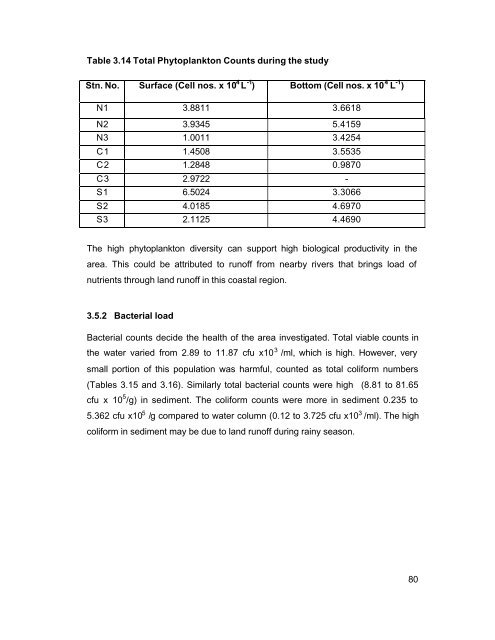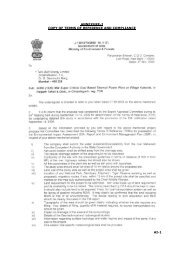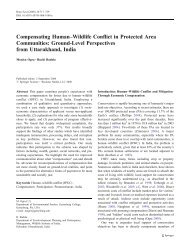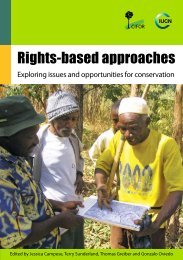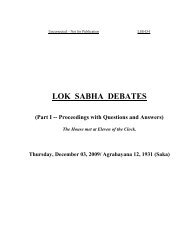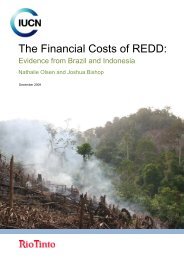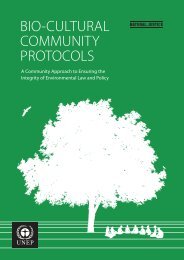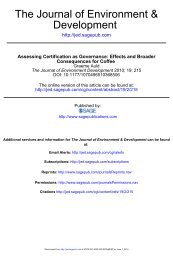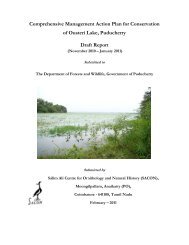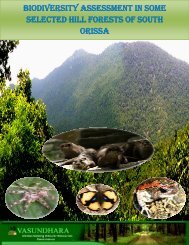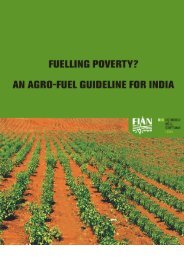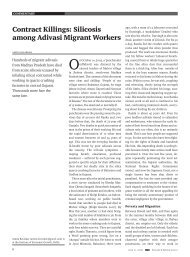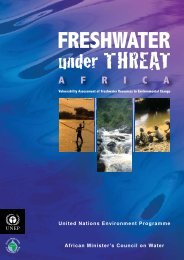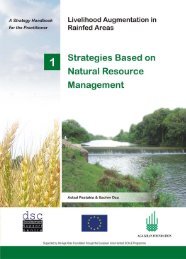1. INTRODUCTION - India Environment Portal
1. INTRODUCTION - India Environment Portal
1. INTRODUCTION - India Environment Portal
You also want an ePaper? Increase the reach of your titles
YUMPU automatically turns print PDFs into web optimized ePapers that Google loves.
Table 3.14 Total Phytoplankton Counts during the study<br />
Stn. No. Surface (Cell nos. x 10 4 L -1 ) Bottom (Cell nos. x 10 4 L -1 )<br />
N1 3.8811 3.6618<br />
N2 3.9345 5.4159<br />
N3 <strong>1.</strong>0011 3.4254<br />
C1 <strong>1.</strong>4508 3.5535<br />
C2 <strong>1.</strong>2848 0.9870<br />
C3 2.9722 -<br />
S1 6.5024 3.3066<br />
S2 4.0185 4.6970<br />
S3 2.1125 4.4690<br />
The high phytoplankton diversity can support high biological productivity in the<br />
area. This could be attributed to runoff from nearby rivers that brings load of<br />
nutrients through land runoff in this coastal region.<br />
3.5.2 Bacterial load<br />
Bacterial counts decide the health of the area investigated. Total viable counts in<br />
the water varied from 2.89 to 1<strong>1.</strong>87 cfu x10 3 /ml, which is high. However, very<br />
small portion of this population was harmful, counted as total coliform numbers<br />
(Tables 3.15 and 3.16). Similarly total bacterial counts were high (8.81 to 8<strong>1.</strong>65<br />
cfu x 10 5 /g) in sediment. The coliform counts were more in sediment 0.235 to<br />
5.362 cfu x10 5 /g compared to water column (0.12 to 3.725 cfu x10 3 /ml). The high<br />
coliform in sediment may be due to land runoff during rainy season.<br />
80


